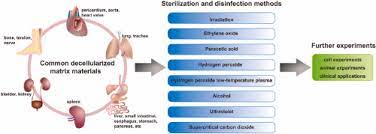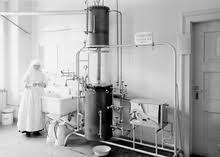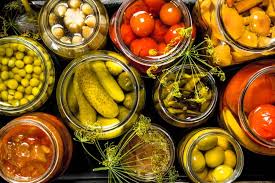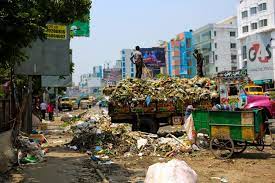Applications of Sterilization Process
UV systems destined for drinking water applications are validated using a third party test house to demonstrate system capability, and usually a nonpathogenic surrogate such as MS 2 phage or Bacillus Subtilis is used to verify actual system performance. UV manufacturers have verified the performance of a number of reactors, in each case iteratively improving the predictive models.
Waste-water Treatment
Ultraviolet in waste-water treatment is replacing chlorination due to the chemical’s toxic by-products. Individual waste streams to be treated by UVGI must be tested to ensure that the method will be effective due to potential interferences such as suspended solids, dyes or other substances that may block or absorb the UV radiation.
UV units to treat small batches (1 to several liters) or low flows (1 to several liters per minute) of water at the community level are estimated to have costs of 0.02 US$ per 1000 liters of water, including the cost of electricity and consumables and the annualized capital cost of the unit.” (WHO, undated).
Large scale urban UV waste-water treatment is performed in cities such as Edmonton, Alberta. The use of ultraviolet light has now become standard practice in most municipal waste-water treatment processes.
Effluent is now starting to be recognized as a valuable resource, not a problem that needs to be dumped. Many waste-water facilities are being renamed as water reclamation facilities, and whether the waste water is being discharged into a river, being used to irrigate crops, or injected into an aquifer for later recovery.

Ultraviolet light is now being used to ensure water is free from harmful organisms.
Aquarium and Pond
Ultraviolet sterilizers are often used in aquaria and ponds to help control unwanted micro-organisms in the water. Continuous sterilization of the water neutralizes single-cell algae and thereby increases water clarity.
UV radiation also ensures that exposed pathogens cannot reproduce, thus decreasing the likelihood of a disease outbreak in an aquarium.
Aquarium and pond sterilizers are typically small, with fittings for tubing that allows the water to flow through the sterilizer on its way to or from a separate external filter.
Within the sterilizer, water flows near to the ultraviolet light source, usually through a baffle system that lengthens the time during which the water is exposed to the radiation.
Laboratory Hygiene
UVGI is often used to disinfect equipment such as safety goggles, instruments, pipettes, and other devices.
Lab personnel also disinfect glassware and plastic ware this way. Microbiology laboratories use UVGI to disinfect surfaces inside biological safety cabinets (“hoods”) between uses.
Food and Beverage Protection
Since the FDA issued a rule in 2001 requiring that virtually all fruit and vegetable juice producers follow HACCP controls, and mandating a 5- log reduction in pathogens, UVGI has seen some use in sterilization of fresh juices such as fresh-pressed apple cider.
UV Dosing
One method for gauging UV effectiveness is to compute UV dose. The U.S. EPA publishes UV dosage guidelines Dosage involves the following parameters:
Flow rate (reflecting contact time)
Transmittance (reflects light reaching the target)
Turbidity (“cloudiness”)
Lamp age (reflects reduction in UV intensity)
Lamp fouling % active lamps (reflects lamp outages in each lamp bank)
In summary, carbon filtering is a method of filtering that uses a piece of activated carbon to remove contaminants and impurities, utilizing chemical adsorption and that Carbon filters have been used for several hundred years and are considered one of the oldest means of water purification and is useful in waste-water treatment.
In the same vein, UV sterilization is a powerful method of waste-water treatment in this modern era. Its use is also found in water purification, aquarium and pond, laboratory hygiene, and food and beverage protection. The two above are advanced methods with high degree of efficiency.
Read Also : The UV Sterilization Process and what is Sterilization Process?
Read Also: Aspergillosis: Description, Damages Caused, Control and Preventive Measures



